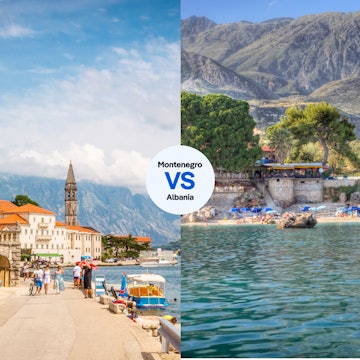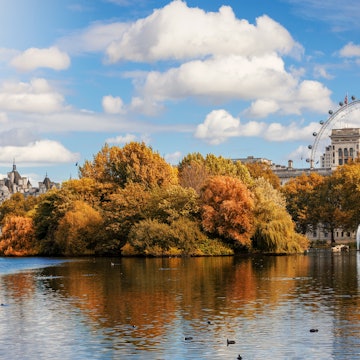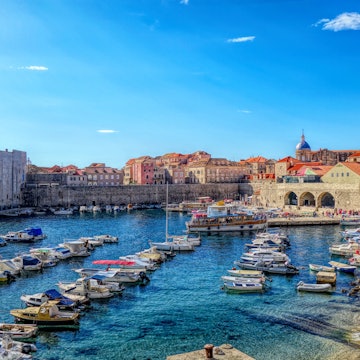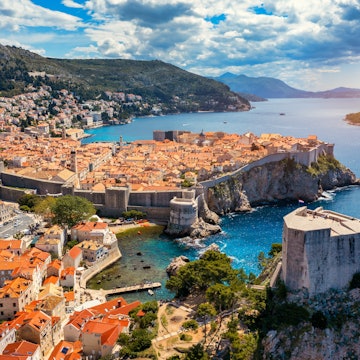
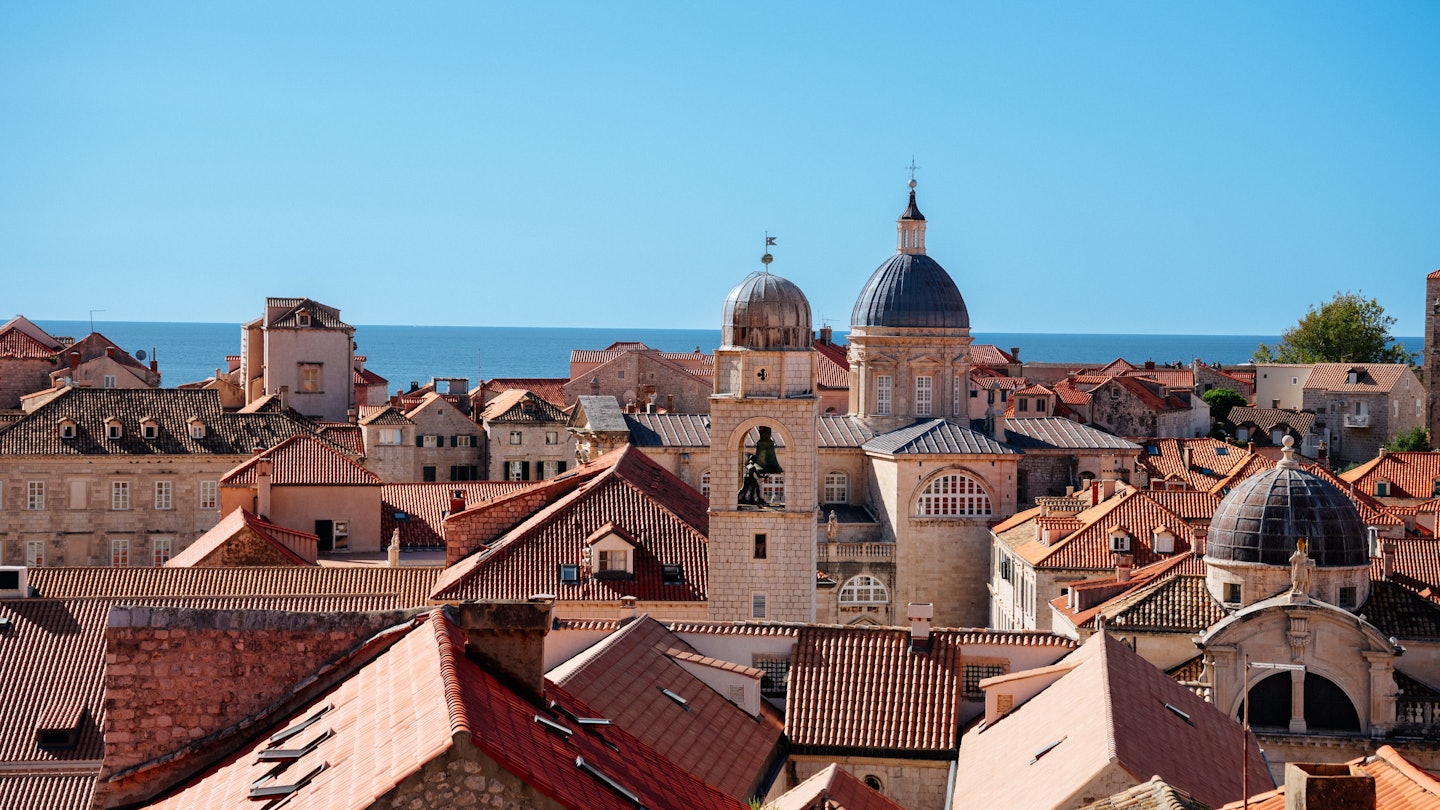
Old Town, Dubrovnik, Croatia. ver0nicka/Shutterstock
Croatia has a lot going on that makes it an excellent spot for your next vacation. And getting around Croatia is generally a breeze, whether heading out on a hike, seeing the sights or planning a road trip.
Croatia’s bus network connects almost everywhere and is a great budget option. Ferries let you tour the coast and islands, and driving around Croatia is fairly straightforward, giving you acces to destinations that aren’t well-served by public transportation. Flights and trains are also great for hopping between Zagreb and the coast.
Transportation in Croatia varies seasonally. In July and August, busy tourist months, it’s worth booking ahead or showing up early for buses and boats. Keep in mind that you might find yourself stuck in traffic on the way in and out of resort towns.
Between November and March, timetables for buses and ferries are reduced, so you may need to plan your route more carefully.
Here's everything you need to know about traveling around Croatia.

Use the country's extensive bus network
Bus services in Croatia are excellent and budget-friendly. You can explore most of Croatia car-free, although Istria (once you’re off the main coastal route) and the islands have patchier networks. The majority of bus stations are in central locations (and conveniently near ferry ports), making getting around straightforward. One exception is Dubrovnik, where the main bus station is around 5km (3.1 miles) from the old town – hop on a local bus or taxi to reach it.
Different companies often operate on the same route, and prices can vary. Luggage stowed in the baggage compartment under the bus costs extra (around €1.30 or US$1.50 per piece). Buses between Split and Dubrovnik pass through Bosnian territory, so keep your passport or ID handy.
At large stations, bus tickets must be purchased at the office, not from drivers, and it's worth booking ahead in high season. Major companies include Arriva, FlixBus and Čazmatrans. Traveling.com is a useful website offering schedules and bookings.

Travel by boat to enjoy Croatia's beautiful coastline
Boats connect the main coastal centers and the surrounding islands year-round, with services extended during the tourist season. Many visitors find cruising the blue waters and rocky shores of the Adriatic one of their trip highlights. The major hubs are Split, Dubrovnik, Šibenik, Zadar and Rijeka. Locals use “ferry” to refer exclusively to car ferries (which can also be used by foot passengers) and “catamaran” for faster, passenger-only services.
Boats are comfortable, with seating inside and out on the deck. The larger boats have restaurants and bars, and almost all have at least a snack counter. Most offer free wi-fi, though the signal is variable.
You can usually buy tickets online (Jadrolinija is the main operator), but pre-booking doesn’t guarantee you a space on a particular sailing – get to the wharf early in peak season if you’re traveling with a car. Foot passengers pay less, have more flexibility and can generally hire a car, scooter or bicycle on arrival.
Traveling by ferry or catamaran in Croatia can be glorious. Sitting on the deck in the sunshine, you can watch the stunning landscape drift past you at a leisurely pace. Lopsided pines, bright wildflowers, coves, porpoises and fishing villages roll by as the sun shifts overhead – relax and enjoy the journey.

Rent a car for flexibility
Driving is an excellent option if you’re in a family or group or if you want to tour several destinations in a short trip – hill towns and resorts of Istria or the Dalmatian coast and nearby national parks like Paklenica and Krka.
In Croatia, vehicles drive on the right and roads are mostly excellent, although there are stretches where service stations are scarce. Still, with most places within a few hours of each other, journey times are short. At around six hours, Zagreb to Dubrovnik is the longest drive you’re likely to take, and one of the few major routes that isn’t entirely on a multi-lane highway (the last section through southern Dalmatia is yet to be upgraded).
Car rentals are available in all major towns and airports. Local companies are often cheaper, but the big chains offer one-way rentals. You may get a lower rate by booking from abroad or getting a fly-drive package. To rent a car, you must be 18 or over and have a valid license and a credit card to cover insurance excess. Hitching is not recommended, but carpooling is an option – BlaBlaCar has a good local presence.
Note that some highways and other routes have tolls. The first set of booths you encounter when you enter a highway dispenses tickets. Present them at the booths when you leave the highway to calculate and pay the toll.

Fly or take the train to get across the country
The train network is limited and often slower than buses. But it’s not a bad bet if you’re exploring inland Croatia or heading between Zagreb and coastal cities such as Rijeka, Pula or Split. Croatian Railways has schedules and prices.
Flying is the quickest way between Zagreb and the coast, and while connections between the coastal cities are less frequent, the connection between the Istrian capital of Pula and Dubrovnik, for example, can be useful if you time it right.
There aren’t many flights to the islands – most visitors get a boat from the nearest mainland port – although you can reach Brač Island from Zagreb. The national carrier is Croatia Airlines.
Explore the islands on a bicycle
Bikes are easy to rent along the coast. Relatively flat islands such as Pag and Lošinj offer the most relaxed cycling, but the winding, hilly roads on other islands have more spectacular views.
Be careful in built-up areas: many roads are busy highways with no bicycle lanes. You’ll see Nextbike’s hire stations in many cities, especially Zagreb, which has decent cycling infrastructure – download the app to get started. Some tourist offices, especially in the Kvarner and Istria regions, have maps of routes and bike rental information.

Use bus and tram networks in larger cities
Many cities and resorts are small enough to walk around. Zagreb’s tram network is useful for the train and bus stations, while a short funicular connects the Lower and Upper Towns. Local buses are fairly frequent in most cities and usefully connect Lapad Bay with central Dubrovnik. Bus tickets are usually €1–2 (UD$1.10–2.20) – with a small discount if you buy tickets at a tisak (newsstand) – and need to be stamped once you’re on board.
Accessible transportation is limited in Croatia
Travelers with mobility issues will find the cobbled streets and endless steps of Croatia's old towns challenging. Many beaches are accessed via steps or rocky walkways, with those near hotels and resorts more likely to have ramps.
Public toilets at bus stations, train stations, airports and large public venues are usually wheelchair-accessible. Bus and train stations in Zagreb, Zadar, Rijeka, Split and Dubrovnik are accessible, but the ferries are not.








